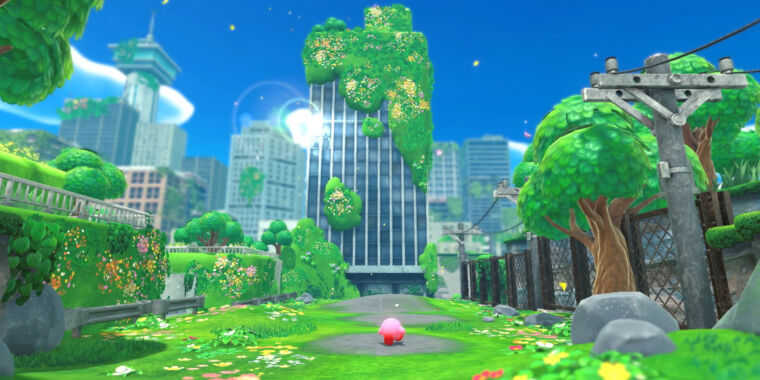
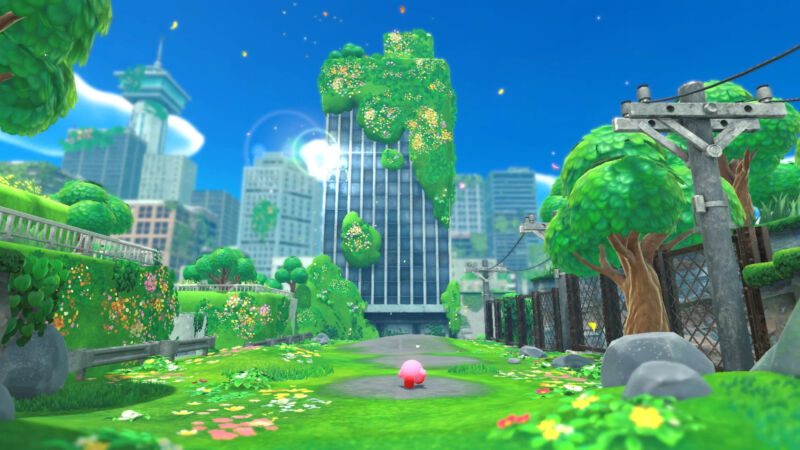
Kirby and the Forgotten Land was the first game I played for review after sinking dozens of hours into Elden Ring. That’s a bit like jumping from an ice bath straight into a pool heated precisely to your body temperature.
Like a warm pool, Kirby‘s first fully 3D adventure is so inviting that you barely notice you’re engaging with a game in the first place. In true franchise tradition, the game offers little resistance and loads of guidance through a veritable theme park filled to the brim with a wide variety of pleasant distractions and secrets to uncover.
In a sense, it’s the anti-Elden Ring, a perfect palate cleanser for those who have overdosed on video game punishment lately.
A new dimension
From the outset, the most striking thing about Forgotten Land is the contrast between the candy-coated characters and the decaying, semi-realistic setting. There’s a sense of surrealism in seeing a pink blob fight a giant hammer-wielding ape amid crumbling, moss-covered buildings. Somehow, though, the incongruity works, and the game remains enjoyable to look at throughout.
While previous Kirby games have used 3D polygons to add some depth to their presentation, the franchise gameplay has by and large been confined to a single 2D plane (save for mini-games like Kirby 3D Rumble). Forgotten Land is a big step for the franchise that has been waiting for its Super Mario 64-style full-3D moment for decades.
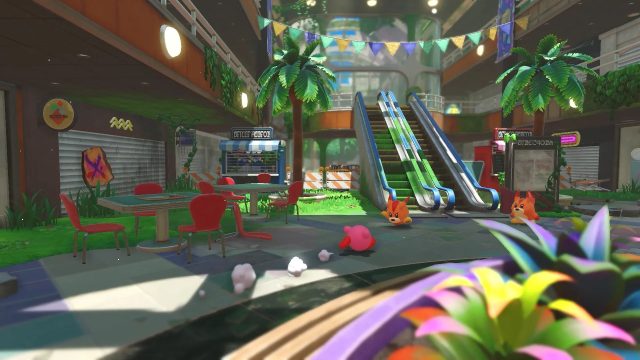
Despite the added dimension, though, you shouldn’t expect a Super Mario Odyssey-style open world here. Almost every level is still a mostly straight path from point A to point B, with very little room for unguided exploration or backtracking. You may run into an occasional short hidden branch on the way that loops back to the main path, but for the most part, this is a decidedly Crash Bandicoot-style take on 3D level design.
The player can’t even directly control the camera, as there’s only one perspective that makes sense—the one that points forward. The game uses this quirk to its advantage, hiding many secrets in ways that are hard to spot from the fixed perspective.
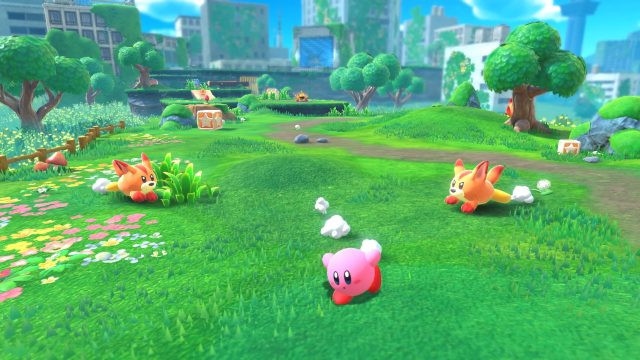
Searching for those hidden bits among the crowded scenery provides a lot of the optional challenge in the game. There are a seemingly endless number of collectibles to find, and while some are locked behind timer-based challenges, most just have to be picked out from the environment. In a sense, that part of Forgotten Land is a bit reminiscent of a simple hidden object game.
Mo’ mouthful, mo’ problems
Despite the game’s 3D expansion, Kirby’s signature ability to copy moves from certain swallowed enemies still features prominently, sometimes offering multiple ways to defeat a boss or conquer a challenge. For the most part, though, the “correct” ability is obvious and provided nearby—you’ll need the dig ability to dig under a fence, for instance, or the ice ability to skate over lava.
This time around, those abilities can be permanently upgraded—bombs become homing bombs, a sword becomes a giant sword, and so on. Occasionally, these upgrades offer tradeoffs between power and speed that need to be considered. Usually, though, they just power up Kirby, to the point where some of the most overpowered abilities make it trivial to roll through entire screens of enemies without a care.
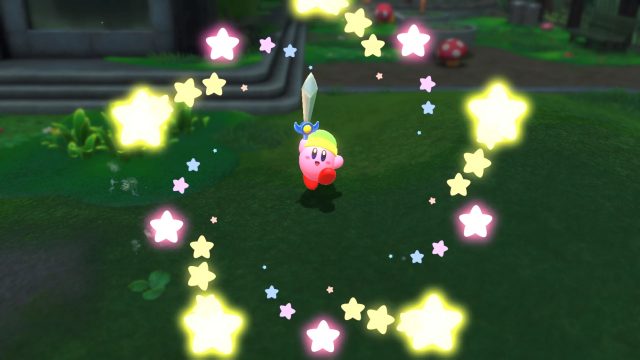
To earn the items needed to unlock these ability upgrades, you must work your way through dozens of short, themed “treasure road” stages that run parallel to the main game. These levels essentially serve as extended tutorials that explain advanced techniques while offering an extra time-based challenge for players who want to test their reflexes.
In Forgotten Land, Kirby’s abilities expand (pun intended) with the creepily named “mouthful mode.” Now, rather than stealing powers from enemies, Kirby can wrap his gelatinous body around specific objects in the environment, gaining a new shape and themed moves as he does. These “mouthful” objects range from the straightforward (a car that powers racing mini-games) to the mundane (a traffic cone that can flip over to wedge through cracks in the ground) or the bizarre (a giant stairway that can waddle around and fall over to crush enemies).